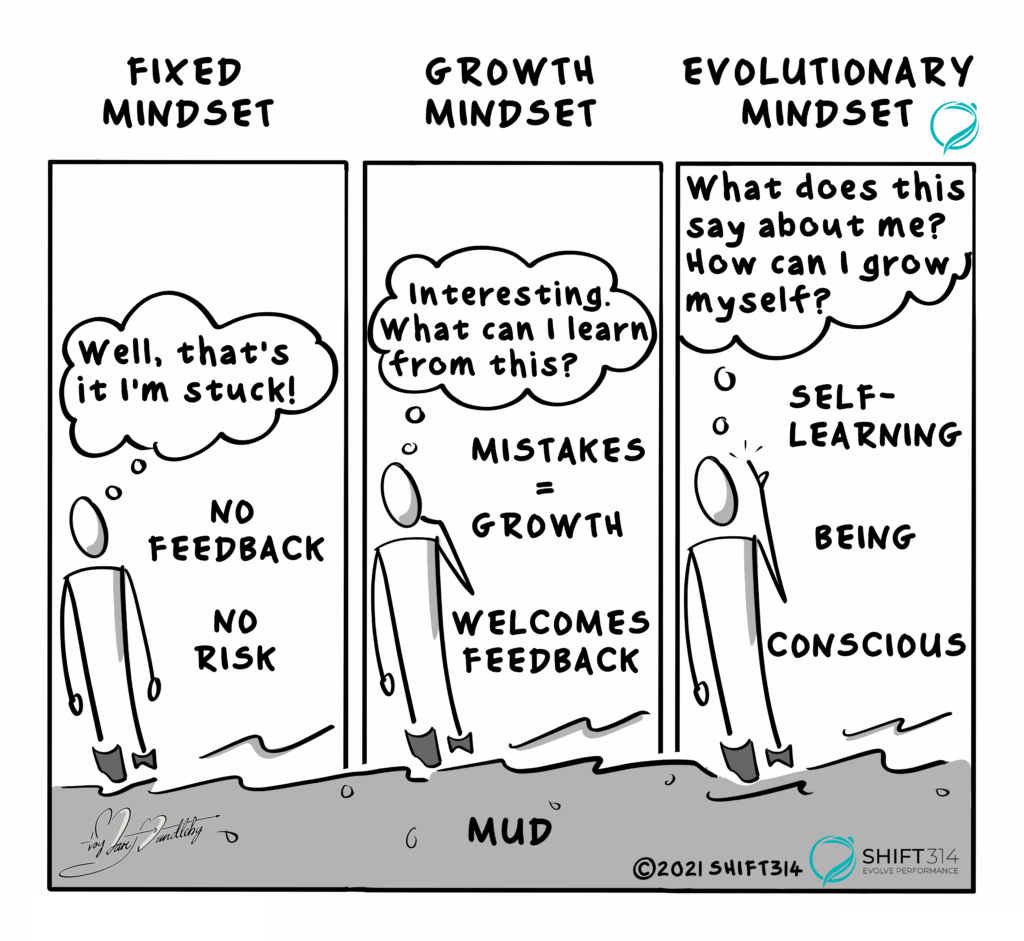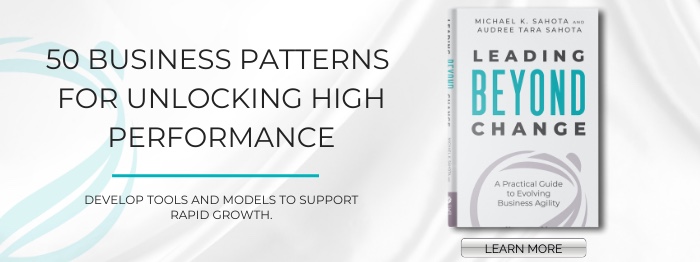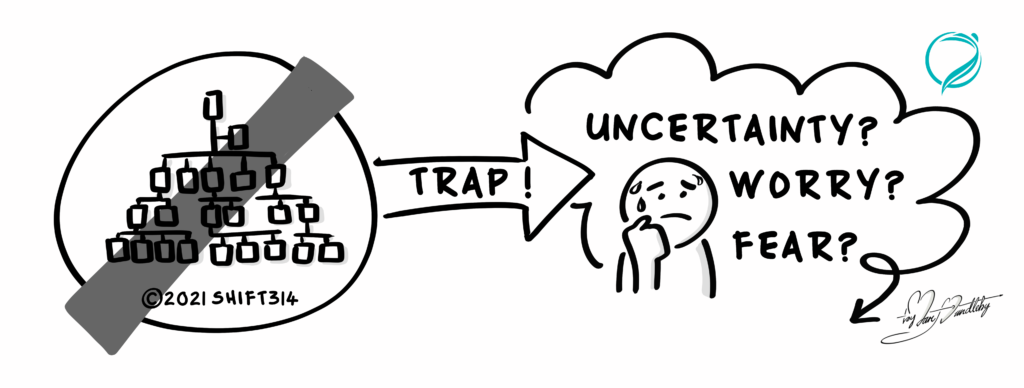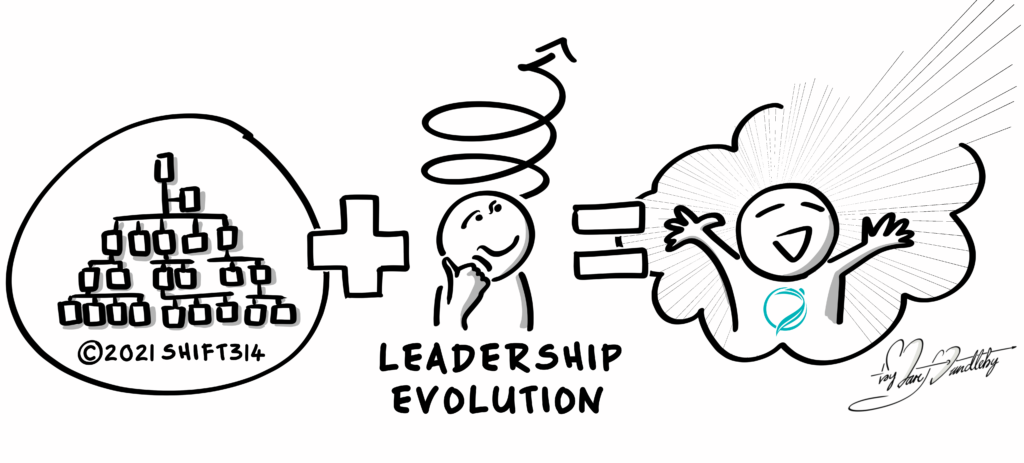This article is adapted from our newly-released book, “Leading Beyond Change”. The following excerpt is from “Chapter 11: The Paradox of Power,” where we discuss the business pattern “From Eliminating Hierarchy to Increasing Freedom”
“Abolishing the hierarchy,” to create a flat organizational structure with self-management: Is this the best decision for an organization, or a trap?
There are many change advocates that promote eliminating the hierarchy, including Pflaeging, Laloux, and Gill. It sounds promising, since many of the problems of low performance seem to stem from the hierarchy and the oppression that accompanies it.
However, attempting to change to a flat organizational structure is almost always disastrous, and can even lead to lower performance in some cases. We have a different view about how to increase the performance of an organization and create a smoother transition for organizational change.
Flat Organizational Structure is Not the Goal
Dropping the hierarchy is not the ultimate goal or objective. Rather, it is a means for creating an outcome. A useful goal is to create a high-performance organization through people who are able to contribute at their best. With this in mind, we might be curious: what is the impact of dropping the hierarchy? How might this help? How might this be harmful? What are the pre-conditions for it to work? How do we increase the chances of a successful transition?

We have no objection to the elimination of the hierarchy as an emergent outcome that best serves the evolutionary path of an organizational system. What we see as harmful is the treatment of dissolving the hierarchy as a universal prescription for success. Attempting to shift culture by changing structures will not work unless it is led or accompanied by a shift in consciousness, a change in the mindset, a dissolved ego where collaboration and equality are integrated into a way of being.
We have no objection to the elimination of the hierarchy as an emergent outcome that best serves the evolutionary path of an organizational system.
Dissolving the Hierarchy Creates Fear
In most organizations, even the merest mention of dropping the hierarchy will trigger intense fear for execs, managers, and workers. Their sense of order and stability goes out the window. In the case of workers, they worry about what new demands may be placed on them and how they will be able to do their jobs. In the case of execs and managers, they wonder if they have a future at all, and be baffled as to what role they may have and how they might contribute what in the future.

The fear triggers the fight or flight system and the resulting loss of intelligence due to reduced blood flow to the brain. Fear has numerous biochemical reactions that create physical limitations. The effects of fear on the physical body include rapid heart rate, nausea, digestive disorders, immune deficiency, and lack of sleep. All of this creates a long-term taxation of imbalance and disease in the physical body.
Don’t Discard the Hierarchy Until People no Longer Need it
“There is something you should understand about the way I work. When you need me but do not want me, then I must stay. When you want me but no longer need me, then I have to go.”
Emma Thompson in “Nanny McPhee” 2005

Without psychological safety, people’s ability to navigate through the confusion of a lack of hierarchy is severely limited. Just at the moment when maximum brain function and learning are needed, the very opposite is created.
In most situations, even exploring the concept of dropping the hierarchy is unhelpful, as it throws leaders and employees into the deep end of organizational change without adequate preparation. Maintaining a sense of order in a hierarchy provides the safety needed for people to evolve.
For most organizations, there is a substantial amount of growth and evolution needed before people are ready for such a dramatic change. Creating a flat organizational structure is actually a late-stage game that demands a high level of organizational maturity and leadership evolution.
Don’t discard the hierarchy until people no longer need it. Effective leaders use power for the greater good of the organization. Discarding all power is an abdication of leadership and, while well-intentioned, is unlikely to be successful in most situations.

What to Do Instead: Focus on Developing People
Instead of dropping the hierarchy and moving to a flat organizational structure immediately, there are ways that you can promote an organic process of evolving leadership and self-management in your organization.
Here are the three steps you can take to make that happen. It’s about working on the pre-conditions needed to create more safety and autonomy.

Focus on a Healthy Hierarchy
Oppression and misuse of power is the real challenge to overcome. The challenge experienced with low-performance culture systems is the existence of a power hierarchy where the executives and managers — do not actually lead with wisdom and fail to serve the organization. It’s the misuse of hierarchy that limits performance.
Hierarchy is neither inherently good nor bad. It is just a tool. Everything revolves around how the tool is used. In healthy organizations, hierarchy is used to create and guide sufficient order and structure to support the psychological safety needed for people to function.
Hierarchy is a naturally occurring structure in nature and in organizations. Regardless of whether or not there is a formal hierarchy, there will always be an awareness of who is more knowledgeable, wiser, skilled, etc. That creates an informal network or ad hoc hierarchy. Some high-performance organizations have a natural hierarchy of leaders who lead with responsibility. We promote Evolutionary Leadership.

Create Boundaries to Support Safety
Boundaries support people’s psychological safety. Every organization needs a set of boundaries to indicate what is allowed and what isn’t. The culture of the organization can be understood as a very complex set of organizational boundaries. While the structures (processes, roles, etc.) are explicit and usually clear, the informal style aspects are often much more tacit but equally important.
There have been numerous attempts to codify rules for human interaction to generate high performance, such as core protocols and holacracy. These are attempts to use structures to govern human beings to shape behavior. Some people really like rules because it gives them a feeling of safety. For most people, they are too unnatural and block the fluidity of natural human interaction.
The consensus from actual Teal organizations seems to be that a compact minimal set of rules work well when people have a high level of personal responsibility. Further, evolving the practices that suit the people and the organizational system is essential. In order to achieve this, the holder of power can invite participants as equals to co-create a set of “rules” for behavior to support self-organization.
Hold Space to Share Power
Who can create a flat organizational structure where people have equal decision-making rights? Only someone with power. The real secret to shifting from a hierarchy to a flat organizational structure is for the leader to hold space for the organization.

Harrison Owen created a powerful technology called Open Space. It was originally created as an “unconference” where the participants would co-create the agenda themselves. There is a special role called the “convener” that only has the power to set the ground rules for collaboration and to hold space for participants. On the outside, holding space doesn’t require any specific activity. Holding space is about not using their power as a convener and holding a positive intention about the participants.
The key to supporting self-organization is for the leader to hold space for others by not using their power.
The example of Captain David Marquet in Turn the Ship Around captures the essence of holding space: “I vow never to give another order.” The constraint to willingly choose to limit one’s power acts as a forcing function to guide a leader’s development to overcome their ego to move into a new way of working and more importantly a new way of being.
For an Agile take on using Open Space as part of the evolution process, please see the innovative work with Open Space Agility.
The Big Shift Comes from Evolving Leaders
Beginning the journey to self-organization or self-management requires a leader who is willing to evolve their consciousness (or mindset/worldview). A willingness to learn and grow, to let go of control, and learning to develop others as leaders. We call this set of characteristics Evolutionary Leadership.

The commitment of a leader to create authentic self-organization is the essential pivot in the evolution of the organization. For some leaders, this choice comes from a deep inner yearning for equality and fair treatment of human beings. For other leaders, the change is born out of necessity or simple practicality. A final source of motivation may come from the awareness that they as a leader are not functioning in a way that will yield the success of the organization that they hope to create.
The choice to change your organization begins with two parallel journeys. One is an emergent journey, the evolution and discovery of the organization of how it will function and what it will be. It is important to be able to listen to the voice of the system. Is it ready? Are people mature and are they willing to take responsibility? What is the evolutionary purpose of the organization and is everyone in alignment?
The other is that of the leader: the journey to lead self-organization requires a profound teacher that supports other leaders in the evolution of their consciousness. A leader that is ready to dissolve their ego and any agenda that would block the growth of the people and the organization. It becomes about guiding others in their brilliance, to create high performance. The leader is able to dissolve the resistance in the system and know how to support the evolution. And the leader is ready to see their damaging behaviors and every time they hit a leadership edge they have no alternative but to evolve or to give up on their goal.
Is Your Organization Ready?
- What percentage of the people in your organization would feel excited and safe with a move to eliminate the hierarchy?
- How clear are the boundaries in your environment?
- How much freedom do people in your environment have to make independent decisions?



